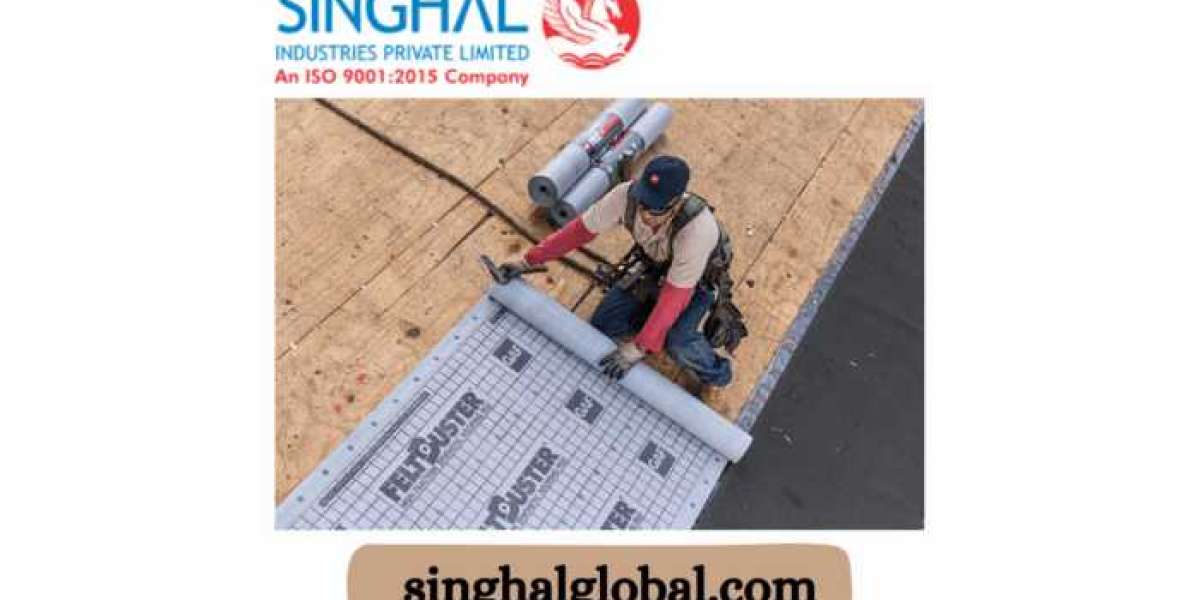Your roof is the first line of defense against the elements, protecting your home from rain, wind, snow, and even sun. But beneath the shingles or other exterior roofing materials lies a hidden hero: the roof underlayment. This unsung layer plays a vital role in ensuring the longevity and performance of your entire roofing system.
Understanding Roof Underlayment
Roof underlayment, also known as roofing felt or roof paper, acts as a secondary barrier between the roof deck (the structural base of the roof) and the exterior roofing material. It provides several crucial benefits:
- Waterproofing: The primary function of underlayment is to shed water away from the roof deck, preventing leaks and moisture damage to the underlying structure.
- Secondary Defense: Even the best roofs can experience windblown rain or ice dams that seep under the shingles. Underlayment provides an extra layer of protection in these situations.
- Ventilation: Some underlayment materials allow for better ventilation in the attic space, which helps prevent heat buildup and moisture condensation.
- Ice and Snow Shedding: Certain underlayment types can improve the shedding of ice and snow, reducing the risk of ice dams and related problems.
Types of Roof Underlayment
There are three main types of roof underlayment available, each with its own advantages and disadvantages:
- Asphalt-Saturated Felt: This traditional and cost-effective option is made from organic materials like paper, saturated with asphalt for waterproofing. While affordable, felt underlayment is less durable than other options and can degrade over time, especially when exposed to high heat and moisture.
- Synthetic Underlayment: A rapidly growing segment, synthetic underlayment is made from non-organic materials like polypropylene or blended composites. It offers superior tear resistance, breathability, and can withstand extreme temperatures better than felt. Blue roofing underlayment is a common type of synthetic underlayment, known for its bright blue color and excellent water resistance.
- Rubberized Asphalt: This high-performance underlayment combines asphalt with a rubberized membrane. It provides exceptional waterproofing, UV resistance, and long-term durability, making it a good choice for harsh climates or applications requiring High temp roof underlayment. However, rubberized asphalt is typically the most expensive underlayment option.
Considering Steel Roof Underlayment:
Steel roofs themselves don't necessarily require a separate underlayment, as the metal panels provide their own waterproofing barrier. However, in some situations, an additional underlayment layer can be beneficial. For instance, some metal roofs may use a secondary layer beneath the panels to improve ice and snow shedding or to provide additional sound dampening. When considering Steel roof underlayment, consult a qualified roofing professional to determine if it's necessary for your specific project.
Installation Considerations
While the general process of installing underlayment is similar across types, there can be some variations. Here are some key points to remember:
- Roof Slope: The minimum recommended slope for a roof will determine the type and installation method of the underlayment. Steeper slopes may require additional underlayment at the eaves (the lower edge of the roof) for optimal water deflection.
- Overlaps: Underlayment rolls are overlapped horizontally and vertically to create a continuous water barrier. Overlap distances and fastening methods may vary depending on the underlayment material and manufacturer's recommendations.
- Flashing and Valleys: Special attention needs to be paid to roof valleys (where two sloping sections meet) and around roof penetrations like chimneys and vents. These areas require proper flashing techniques and additional underlayment reinforcement to ensure watertight seals.
It's crucial to follow the manufacturer's specific installation instructions for the chosen underlayment material. For complex roof designs or if you're unsure about DIY installation, hiring a qualified roofing contractor is highly recommended.
Benefits of Using Quality Underlayment
Investing in a good quality underlayment offers numerous benefits for your roof and home:
- Extended Roof Lifespan: A properly installed underlayment protects the roof deck from moisture damage, a leading cause of roof deterioration. This can significantly extend the lifespan of your entire roofing system.
- Improved Warranty Coverage: Many roofing material manufacturers offer extended warranties when their products are installed with a specific type of underlayment.
- Enhanced Energy Efficiency: Underlayment can help reduce heat transfer through the roof, contributing to better attic ventilation and potentially lowering your energy bills.
- Peace of Mind: Knowing your home is protected by a robust roofing system with a reliable underlayment provides peace of mind and reduces the risk of costly repairs down the road.
Conclusion
Roof underlayment, though hidden beneath the surface, plays a vital role in the overall health and performance of your roof. By understanding the different types of underlayment available, their benefits, and proper installation practices, you can make informed decisions to ensure your roof provides lasting protection for your home. Remember, a high-quality underlayment is an investment that can significantly extend the lifespan of your roof and save you money in the long run.
FAQs (Frequently asked questions)
Q1. Do I need roof underlayment?
A1. Yes, roof underlayment is a crucial component of any well-constructed roof. It provides a secondary barrier against water infiltration, protecting your roof deck and home's interior from potential leaks and moisture damage.
Q2. How long does roof underlayment last?
A2. The lifespan of roof underlayment varies depending on the material. Asphalt felt typically lasts 15-20 years, while synthetic underlayment can last 30-50 years or even longer. Rubberized asphalt underlayment boasts the longest lifespan, potentially lasting for the entire life of the roof (50+ years).
Q3. What are the signs that I need to replace my roof underlayment?
A3. There might not be visible signs of underlayment failure from the ground. However, if you experience leaks in your attic, have missing or damaged shingles that expose the underlayment, or notice sagging or buckling of the roof deck, these could indicate problems with the underlayment. Consulting a professional roofer for an inspection is recommended in such situations.













